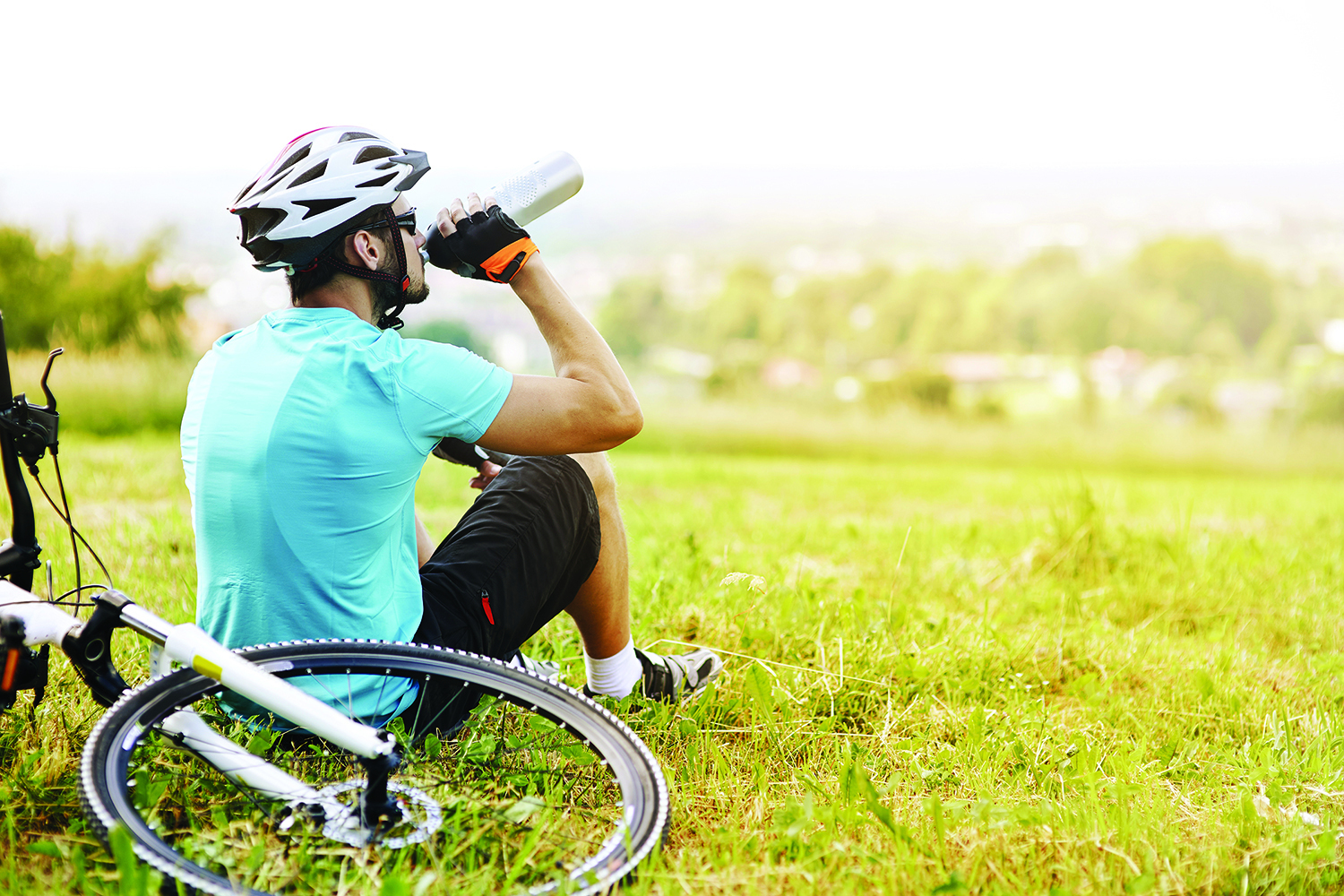WORK OUT WISELY

Now that we are in the throes of summer, many of us are spending more time outdoors, moving our fitness regimens out of the gym. Whether your exercise routine has you venturing out on the water, on the trails, or just around the neighborhood, there are things you can do to ensure you enjoy those outdoor activities without injury. Summer months bring a variety of challenges as we deal with heat, humidity, and sun. We also see changes when we head to uneven terrains of the trails and the road versus the more even surfaces of indoor training that we do inside during the colder months. Take a look at the following three tips to help you achieve your summer fitness goals and not be cooped up inside, sidelined by preventable injury.
1. STAY HYDRATED. The benefits of staying hydrated can be obvious on the surface. Keeping our bodies hydrated allows our internal organs to function as they should. What we don’t see as often are the effects that dehydration can have on our neuromuscular system. Cramping is commonly associated with it, and can affect our soft tissue and mobility. A bigger issue we don’t commonly hear about is the effects of muscle soreness and hydration. The soreness you feel after working out or performing strenuous activities is known as delayed onset of muscle soreness. This usually occurs 24-48 hours after activity. Although we see that periods of inactivity and then performing strenuous activity can play a role, we also see that hydration is a key factor in making sure you don’t get too sore. The best way to stay hydrated is to drink fluids throughout the day, not just during the activity. This will help prepare your body for the environment better versus your body reacting to the heat and having to work overtime to fight it off.
2. WARM UP. Preparing your body in the heat and sun is crucial to being able to exert yourself with exercise and activities safely. Let’s take running, for example. If I just jumped into a three-mile run, my body temperature would rise at an exponential rate, leading to possible overheating. By doing a 10-15 minute warm up, consisting of moderate intensity movements (such as jumping jacks, lunges, or jumps), my body will become acclimated to the heat and adapt to the temperature without overheating. Another added bonus of this is to prime your nervous system for the activity you’re about to do, which leads to decreased muscle pulls and injuries. It is worth 10 minutes of your time to warm up properly, which ultimately leads to better performance.
3. COOL DOWN. If you finish your workout and simply go about your day, you may not remember that your body was just operating at a higher body temperature, especially outdoors with humidity and heat, and is trying to come back down to a normal temperature. This also includes associated vital signs, including blood pressure and pulse trying to return to normal ranges. By ignoring the cool down of 5-10 minutes, you are setting yourself up for potential injury and diminished effects of training. This effects your ability to “down regulate” your system.
When we are doing activities, we primarily use our sympathetic, or “fight or flight,” mode system. This is not a system we want to use all the time, especially at resting or normal day activities. The system we try to reach with our cool down is the parasympathetic system, which slows down our heart rate, decreases our pulse, and allows our body temperature to return to normal. We can achieve this system very easily after activities by stretching/foam rolling the muscles we just used or simply just working on deep breathing. Laying on your back with your knees bent and working on trying to breathe through your belly, not your chest, will help increase your parasympathetic system effectively. Even five minutes can have a positive effect, allowing your body to recover correctly.
Adding these three steps to your workout regimen will help you to stay in shape and enjoy the activities you love this summer. Add them in two to three times a week before trying to do them daily to allow them to become habit.

